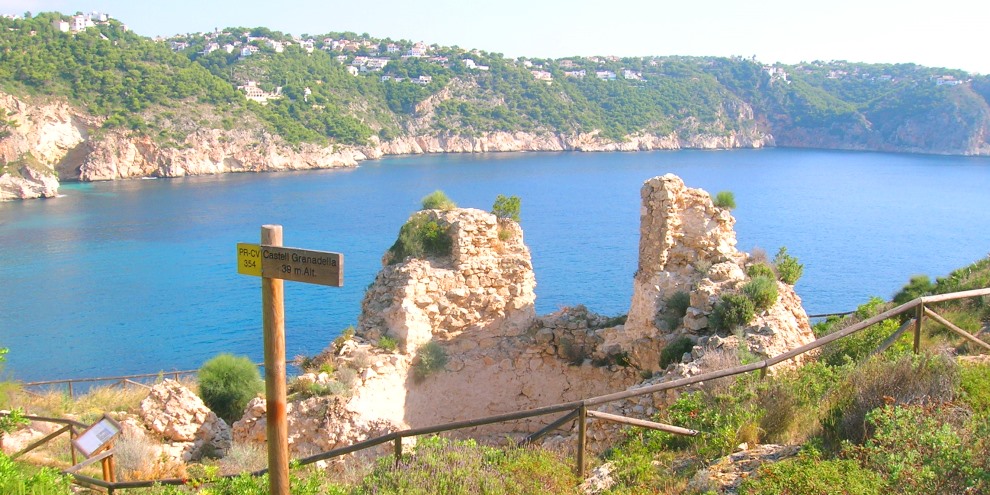
This is a short route to the ruins of the Castell de la Granadella of just three kilometres which might fall into the category of ‘Gentle Stroll’ were it not for two tricky short sections traversed with the use of chains and a steep set of natural ‘steps’ into the Barranc de la Xapa which can be particularly tricky both during the descent and the climb back up on the return. And some might say that the steep climb up the road at the beginning of the walk is hardly a barrel of laughs so an ‘Energetic Wander’ it is.
Route Details
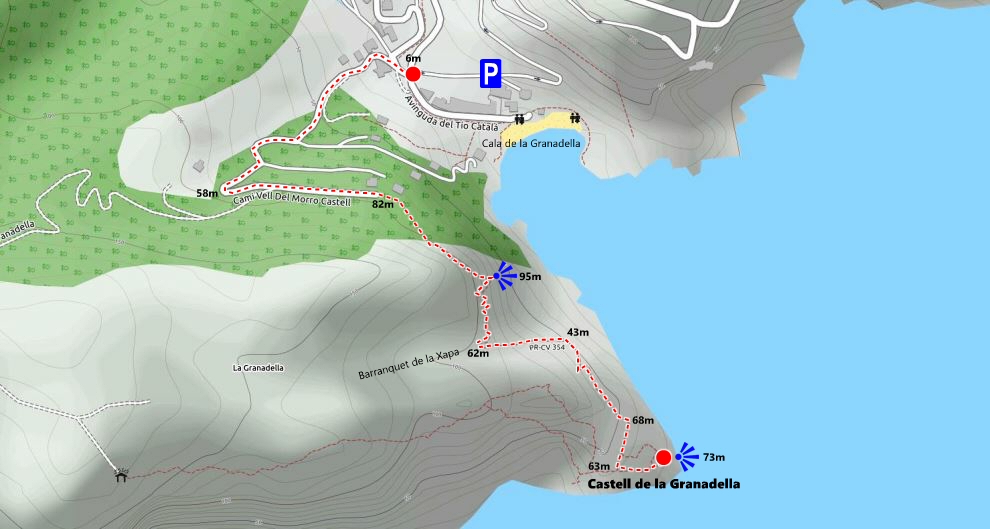
LENGTH: 3 kilometres
TERRAIN: Tarmac and Rocky Path, steep sections with chains
EQUIPMENT: Sturdy Footwear, Water, Camera
START: Carretera de la Granadella (N 38° 43′ 48.9″, E 0° 11′ 41.6″)
NOTE: Be aware that during the high season months of July and August, the road to Granadella cove is closed to vehicular traffic with a shuttle bus laid on by the town hall from a parking zone in La Guardia.
The route begins close the popular beach of Cala de la Granadella, recently voted as the best beach in Spain by a poll conducted by a national television company. Parking is available in Carrer Pic Tort.
At the bottom of Carrer Pic Tort, there is a wooden signpost indicating several destinations that can be reached on the long circular PR-CV 354 footpath; take the way that is indicated as [Castell Granadella] to begin the climb along a concrete road for a distance of about 600m. Look out for the yellow-and-white markings on posts and electric pylons to guide the way. At the fifth turn in the road, a rough track climbs steadily towards a row of houses set high up on the hillside above the village of Granadella.
Follow the track along the back of the houses as it narrows into a pathway and then turns abruptly into the trees and starts climbing up beneath high cliffs; once again, keep an eye out for a yellow-and-white marker painted on a tree.
The stone beach of Granadella comes into view as the ground drops away sharply to the left. Wooden railings provide some sense of security as the path gently climbs between the two cliff-faces; look out for a large white arrow painted on a boulder which marks the way, even though it’s quite obvious.
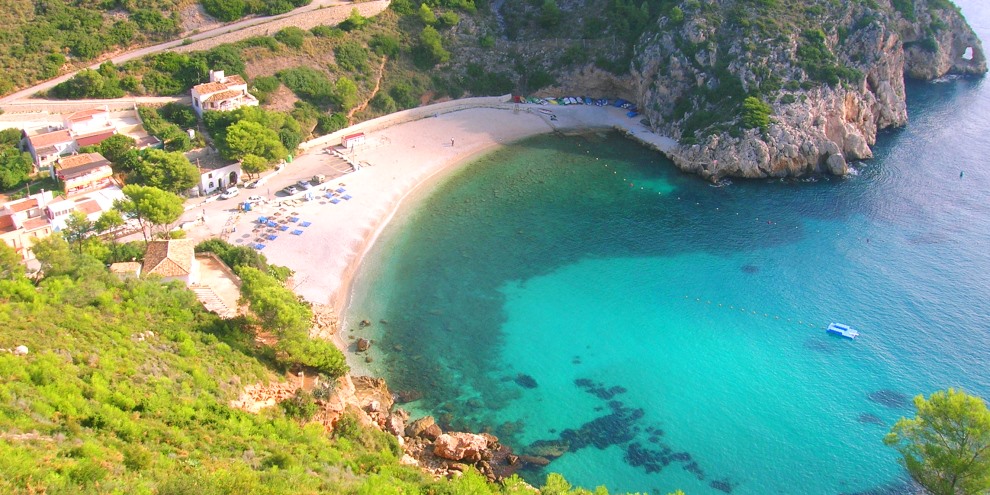
Eventually the path drops into a wide natural viewpoint surrounded by a low wooden fence which provides a stunning view down into the small cove of Granadella and across the wide bay of Ambolo and the little island of Descobridor which appears to be moored just off the headland in the distance.
The path continues along the edge of a small gorge – you may have to push through the undergrowth – and then drops into the deep Barranc de la Xapa via a series of very steep steps, both natural and man-made, for which there are now some handy wooden rails to assist in the descent. At the bottom, you can skip easily over the course of a small stream and the path turns abruptly to the left to push through the undergrowth and skirt around the other side of the gorge with the ground dropping steeply away to the left towards the sea. The path emerges from the gorge and you’re back on top of the sea-cliff with the clear Mediterranean waters a long drop down on the left-hand side. The views are stunning; this truly is a remarkable section of the coast.
The ground becomes particularly steep and, whilst there’s no real danger of sliding over the edge and dropping into those crystal clear waters, a slip might prove somewhat problematic so two handy chains have been secured along a couple of particularly tricky sections.
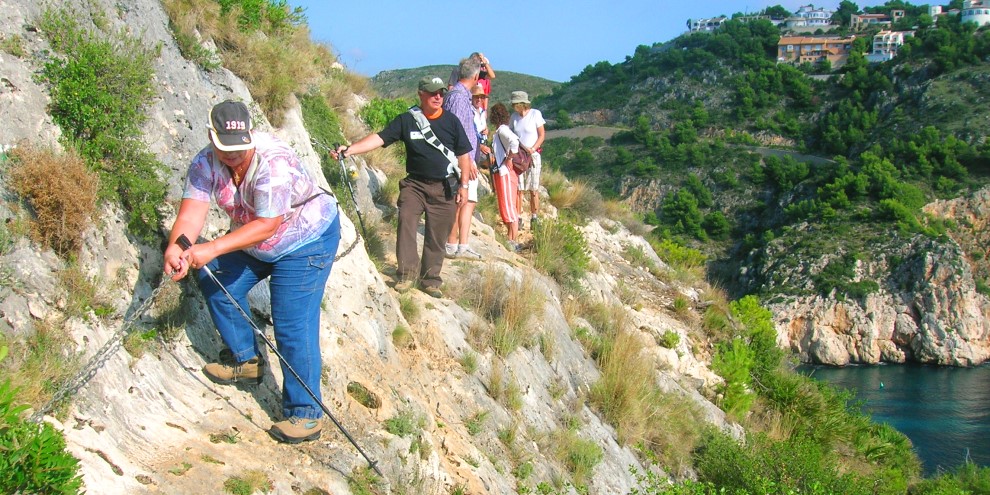
The first is fairly simple and those who have opted to wear sturdy footwear should skip across the section with no problem but those who opted to cover the route in flip-flops might find it a little more difficult. A few hundred metres on, a two metre high wall of rock appears to block any further progress but there is a second chain securely attached to the rock above which can be used to haul yourself up onto the top. It can take a little more effort and determination but the reward is very close.
Having scaled the chain, the ruins of the castle sit below you. Follow the obvious path down to a small wooden signpost indicating the direction to the castle (not that it’s needed, except maybe during periods of extreme fog); it also indicates the direction in which the PR-CV 354 path continues as it scales the narrow ridge above.
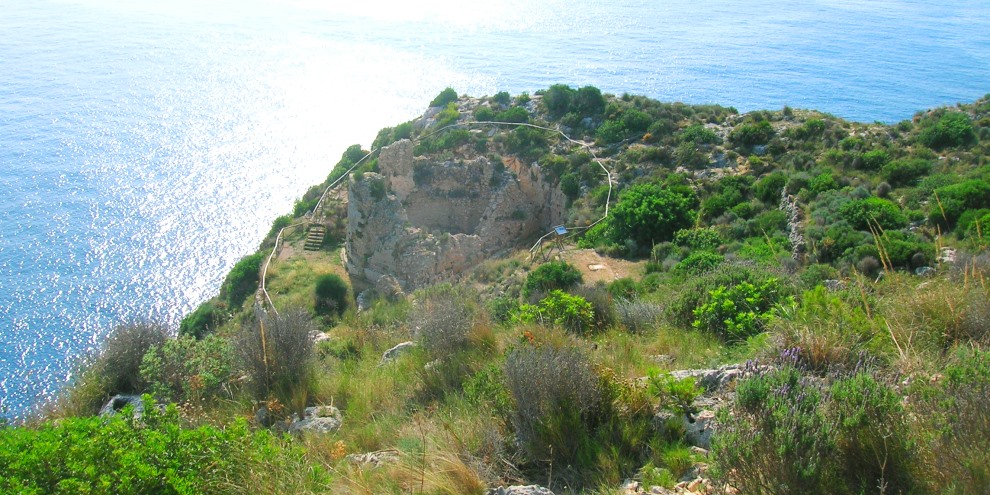
Drop down to the castle ruins and enjoy some spectacular scenery; you can see why this was a perfect position for a watch-tower.
It was built in the first half of the 18th century as part of the coastal defence network which aimed to protect the region from the marauding Barbary pirates from north Africa which had threatened the coast for several centuries. A contingent of just three men with some arbitrary artillery would have kept watch over the cove of Granadella and across the bay to the Rincon d’Ambolo where there was – and still is – a watchtower on top of the cliffs of the narrow headland to pass on the message northwards. The horse-shoe shaped building, the last to be built along this part of the coast, had walls that were up to three metres thick but they couldn’t stop the castle being destroyed by English forces during the Peninsular War to ensure that the defenses couldn’t be used by Napoleonic forces.
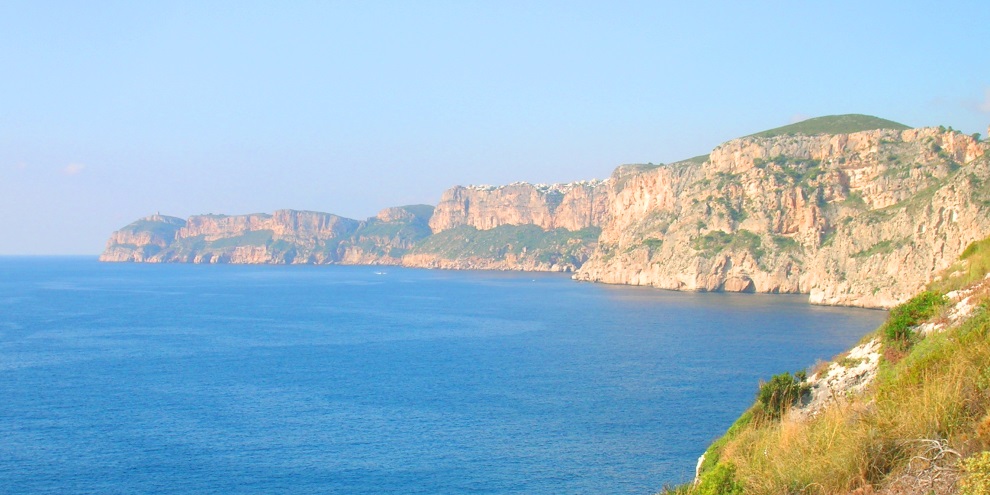
Those with a healthy respect for heights can scale the rocks beyond the castle and gaze south along the steep almost impenetrable cliffs towards the Cap d’Or. Take a few minutes to enjoy the relative tranquility of this place. Explore the ruins, including the well which is still in good condition and has a capacity of almost 24,000 litres of water.
The return is via the same route.
RELATED LINK: Walking – PR-CV 354 La Granadella
RELATED LINK: Walking – The Granadella Coastal Loop
RELATED LINK: Visiting – The Parks
RELATED LINK: Visiting – The Beaches
“If you are close to a precipice, go away a bit; if you are far from it, come close a bit! Enjoy the safety, enjoy the view! Without safety, it is dangerous; without the view, it is dull! Life is an art of adjusting the distances!”
MEHMET MURAT ILDAN
Turkish Writer

